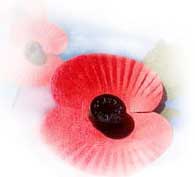

Many wounded soldiers could be patched up close to the front line in Regimental Aid Posts, which could provide basic treatment for superficial wounds. If further treatment was necessary, parties of stretcher-bearers moved the casualty to an Advanced Dressing station where wounds could be dressed and emergency operations carried out.
If further treatment were required then the soldier would be moved by wagon transport to a Casualty Clearing Station. Casualty Clearing Stations were normally based a few miles behind the lines and close to a railway infrastructure. All soldiers unfit for further travel would be held at a Casualty Clearing Station and serious operations such as amputations would be carried out here. Treatment was also available for special conditions such as nervous disorders, infectious diseases and particularly bad wounds. A typical Casualty Clearing Station could hold up to 1000 casualties at a time, but at times of heavy fighting they would exceed this number.
From here casualties could be moved on to General and Stationary Hospitals on the Western Front. Stationary hospitals could hold 400 casualties while General Hospitals could hold 1040 patients. These were the last stop in France on the casualty evacuation chain before wounded men were returned to military hospitals in Britain.